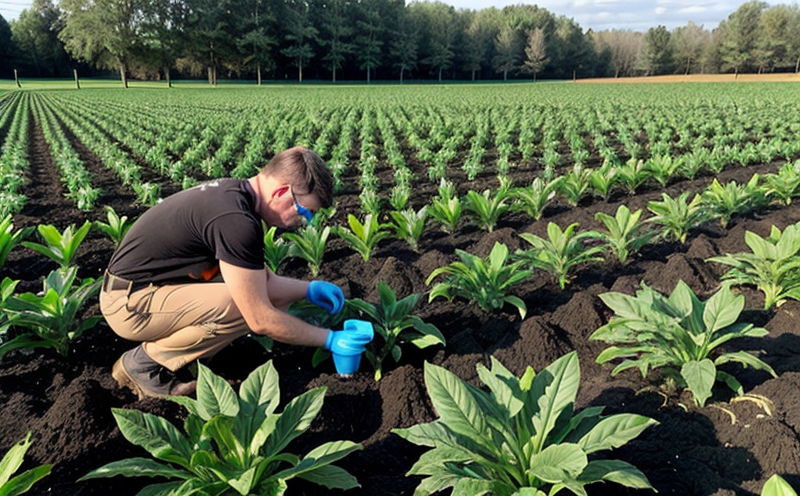Bioavailability of Nutrients Testing in Fertilizers
The bioavailability of nutrients testing in fertilizers is a critical process that ensures the effectiveness and efficiency of nutrient delivery to crops. This service plays a pivotal role in agriculture by ensuring that the nutrients provided are readily available for plant uptake, thereby optimizing crop yield and quality.
Understanding the bioavailability of nutrients involves analyzing how quickly and effectively the nutrients can be absorbed by plants under specific environmental conditions. This testing is essential for several reasons:
- To ensure regulatory compliance with international standards such as ISO 17259 and ASTM D863.
- To support sustainable agricultural practices by minimizing nutrient loss and runoff into water bodies.
- To enhance crop productivity through optimized fertilizer application rates.
The testing process typically involves simulating the soil conditions in which crops will grow. This includes replicating pH levels, moisture content, temperature, and other environmental factors that influence nutrient solubility and plant uptake. The samples are then incubated under controlled conditions to observe the rate at which nutrients become available for plant use.
For instance, in sandy soils with a low water-holding capacity, the bioavailability of nitrogen (N) may be higher than in clay soils due to faster leaching rates. Testing helps determine the optimal application timing and amount of fertilizer needed to achieve maximum crop yield without causing environmental harm.
| Environmental Factor | Bioavailability Impact |
|---|---|
| pH Level | Promotes or inhibits nutrient solubility and uptake. |
| Moisture Content | Affects the rate of chemical reactions between nutrients and soil components. |
| Temperature | Modulates microbial activity, which can influence nutrient availability. |
Applied Standards
The bioavailability of nutrients testing in fertilizers adheres to several international standards that ensure accuracy and consistency. These include:
- ISO 17259:2018 – Analytical Methods for Plant Nutrition.
- ASTM D863-18 – Standard Test Method for Determination of Available Nitrogen in Soil and Soil Mixtures.
The standards provide detailed protocols on sample preparation, reagent selection, and analysis methods. Compliance with these standards ensures that the testing results are reliable and can be trusted by regulatory bodies and industry stakeholders.
Eurolab Advantages
At Eurolab, we offer comprehensive bioavailability of nutrients testing services tailored to meet your specific needs. Our advantages include:
- Accurate and Reliable Results: Using state-of-the-art equipment and adhering strictly to international standards.
- Comprehensive Reporting: Detailed reports that provide insights into nutrient availability under various conditions.
- Expertise in Agriculture: Our team of experts has extensive experience in agriculture, ensuring precise interpretation of results.
- Fast Turnaround Times: Efficient processing to deliver timely results, supporting prompt decision-making.
Use Cases and Application Examples
Bioavailability testing is widely used in various agricultural applications. Here are some key use cases:
- Optimizing Fertilizer Use: By determining the optimal timing and amount of fertilizer application, farmers can maximize crop yield while reducing waste.
- Sustainable Farming Practices: Ensuring that nutrients are available to plants without leaching into groundwater or surface water.
- Research and Development: Providing data for developing new fertilizers with enhanced nutrient availability.





